- Author: Kathy Keatley Garvey
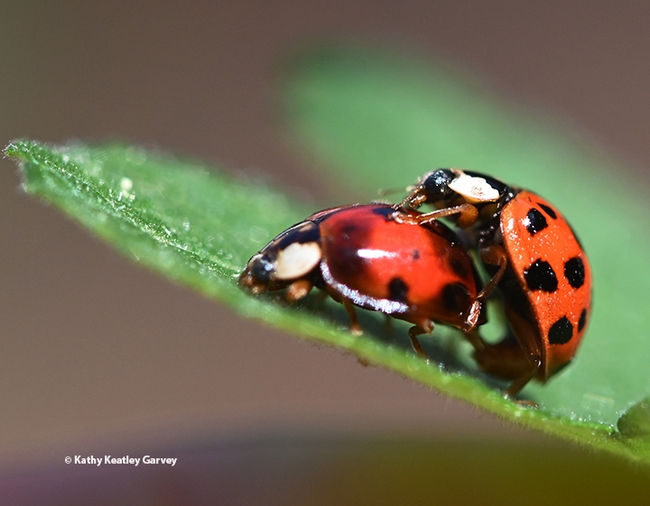
All over the meadow and the hill
Buds 're bustin' outa bushes
And the rompin' river pushes
Ev'ry little wheel that wheels beside the mill
--Rodgers and Hammerstein
Just remove "June" and replace it with "Spring."
Rodgers and Hammerstein mentioned that "buds are bustin' outa bushes," but they could have changed that to "bugs."
Bugs bustin' out of bushes. Our little buddies, the bugs.
Sunday, March 20 was the first day of spring, and two lady beetles, aka ladybugs, made sure we knew it. They were bustin' some moves.
These multicolored Asian lady beetles managed to coordinate their arrival with their prey, those pesky aphids and other soft-bodied insects.
"Multicolored Asian lady beetle can be found in almost any type of vegetation that hosts its prey," according to the the UC Statewide Integrated Pest Management Program website. "It was introduced to control soft-bodied pests on fruit and nut trees. Since arriving in California in the 1990s, multicolored Asian lady beetle has become the most common lady beetle in many habitats. It has outcompeted and displaced certain native lady beetles that were more common prior to its arrival in the state."
And how many aphids can an adult beetle eat per day? More than 100. Larvae eat 'em, too. "Each larva can consume about 600 to 1,200 aphids during its development through 4 instars," UC IPM points out. "Because adults can live more than 1 year, an individual can consume over 5,000 aphids or similar-sized pests during its larval and adult lifespan."
"This voracious predator has improved biological control of soft-bodied pests in various crop, garden, and landscape situations. However, the multicolored Asian lady beetle is also an unwelcome pest when it enters buildings during fall seeking shelter overwinter. When disturbed adults can emit drops of their odorous, orange blood. Adults are attracted to ripening fruit and sometimes contaminate grape and wine juices with their bitter-tasting blood that contains alkaloids it uses as defensive chemicals."
However, our little buddies are always welcome in our pollinator garden. Aphids, not!
Okay, buds, go out and bust some more moves.
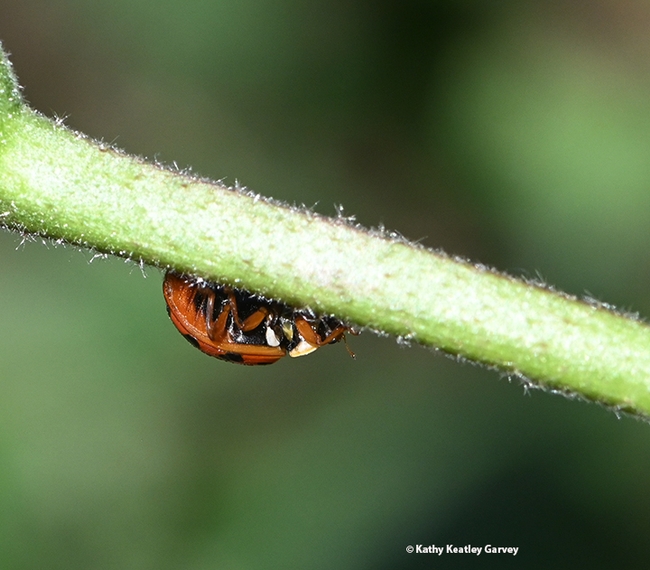
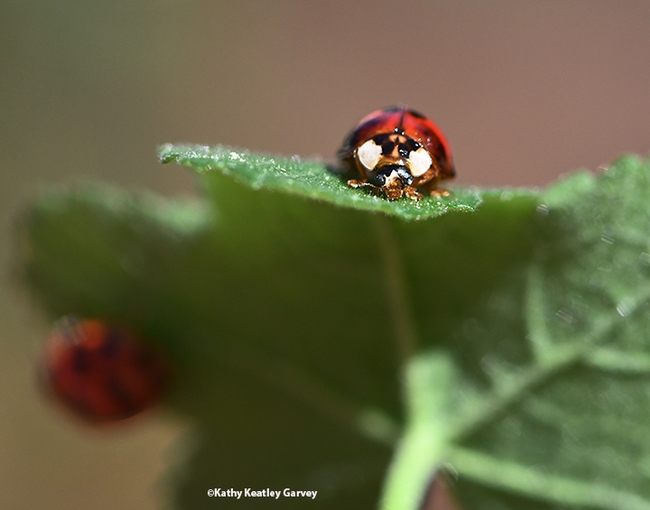
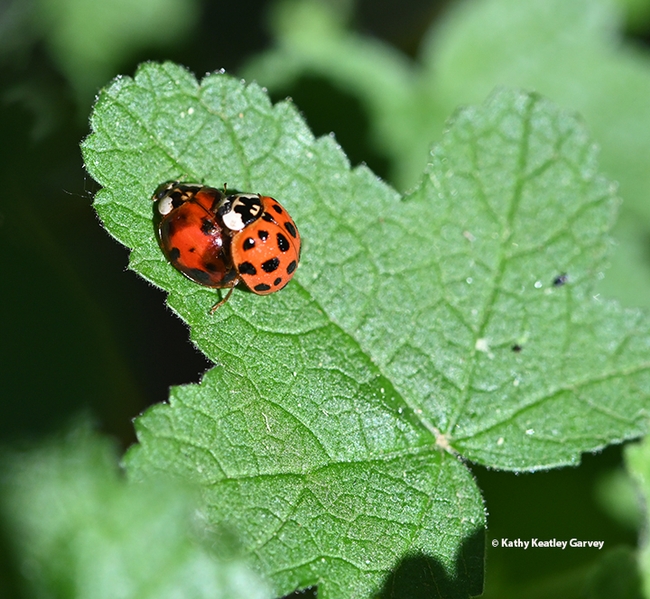
- Author: Kathy Keatley Garvey

Hammock, who now holds a joint appointment with the Department of Entomology and Nematology and the UC Davis Comprehensive Cancer Center, knows too well what fire can do to victims.
So do other members of the Hammock lab and the Department of Surgery, University of Cincinnati College of Medicine (UC CoM).
They've just published research in the Proceedings of the Natural Academy of Sciences detailing their discovery of a key regulatory mechanism in inflammation that may lead to resolving inflammation in burn patients, as well as sepsis, cancer and COVID patients.
Basically, they discovered a pathway that regulates the immune response after infection or injury, such as burns. Dysregulation of this pathway could differentiate those who are at risk of fatal sepsis or help identify targets to resolve this unregulated inflammation.
“We are very excited about the findings in this paper and the far-reaching impacts it could have on understanding a key regulatory step in the immune response,” said co-lead author and researcher Cindy McReynolds of the Hammock lab and director of research at EicOsis, a Davis-based company founded by Hammock. Hammock, the corresponding author of the publication, has been involved in enzyme research for more than 50 years.
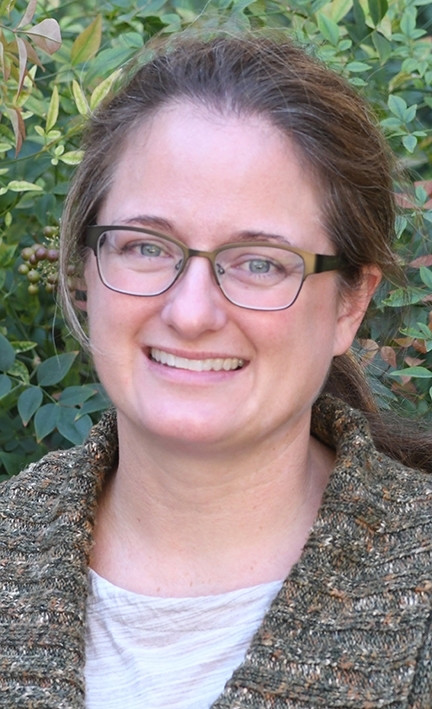
“This dysregulation has fatal consequences in serious diseases such as COVID, cancer, sepsis, burn, where fatality rates can be as high as 40 percent in severe cases,” she said. “An understanding of these pathways can help identify patients at risk of developing serious disease or identify new therapeutic targets for treatment.”

The research, titled "sEH-Derived Metabolites of Linoleic Acid Drive Pathologic Inflammation while Impairing Key Innate Immune Cell Function in Burn Injury,” is co-authored by Debin Wan, formerly of the Hammock lab and now a scientist at Escape Bio, San Francisco; Nalin Singh of the Hammock lab; and three UC CoM researchers: Charles Caldwell, professor and director, Division of Research, Department of Surgery; Dorothy Supp, adjunct professor in the Department of Surgery and a scientific staff member at Shriners Children's Ohio; and Holly Goetzman, principal research assistant in the Caldwell lab.
It's a complicated research project, but a crucial one to help humanity.
And that's what EicOsis is all about, as well. Hammock founded EicOsis in December 2011 to advance novel, safe and effective oral treatments for patients suffering from pain and inflammation. The LLC is developing a new class of oral non-narcotic analgesics based on inhibition of the soluble epoxide hydrolase enzyme. Human clinical trials are underway to test the drug candidate, EC5026, a first-in-class, small molecule that potently inhibits sEH. The sEH inhibitors have already shown to be effective for inflammatory and neuropathic pain in animals, with no apparent adverse or addictive reactions.

- Author: Kathy Keatley Garvey
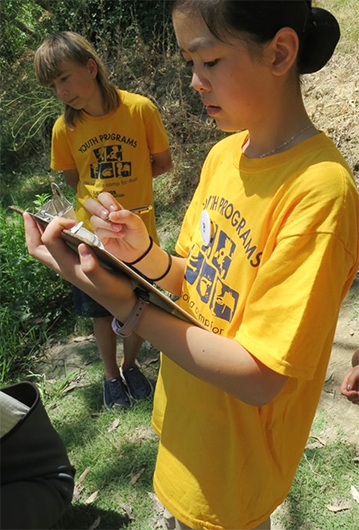
To apply, students must write a letter about why they want to attend Bio Boot Camp. Letters of recommendations are required but can be "a tad later" as students may be on spring break, says Tabatha Yang, the Bohart Museum of Entomology's education and outreach coordinator.
The camps are hosted by the Bohart Museum of Entomology in collaboration with the UC Davis Museum of Wildlife and Fish Biology, Campus Recreation and the UC Reserve System.
First, there's the Bio Boot Camp, Mountain Session, set July 25-29, for students entering grades 7-9 in the fall. The fee is $475. For those entering 10-12 grades in the fall, there's the Bio Boot Camp 2.0, set July 31-Aug. 6. The fee is $895. Need-based scholarships (partial) are available for both camps.
See website at https://bohart.ucdavis.edu/summer-camps.html. Note that COVID-19 regulations apply. They include proof of full vaccination.
Some Bio Boot Camp alumni, like Gwen Erdosh, go on to major in entomology at UC Davis, become president of the UC Davis Entomology Club and be accepted in the campuswide Research Scholars Program in Insect Biology. She draws 24,000 followers on her “Gwentomologist” Instagram account. She recently won a Provost's Undergraduate Research Fellowship, and the Dr. Stephen Garczynski Undergraduate Research Scholarship from the Pacific Branch, Entomological Society of America.
“Ever since I can remember, I have always loved caterpillars,” Gwen said. (See news story.) “As a little kid, I would collect any caterpillar I saw and raise it to adulthood.” Amazed that a caterpillar could "magically change” into a moth or butterfly, she decided “to make a book matching every caterpillar to its adult. I did my own research online and in books I had, and soon was quite knowledgeable about Lepidoptera. The summer before 9th grade, I attended Bio Boot camp, the summer camp for kids led by the Bohart Museum, and Tabatha Yang (education and outreach coordinator). “This was the experience that led me to choose entomology as a career. During this camp, I learned everything about entomology and had a chance to meet real entomologists at UC Davis, and do field work. I fell in love with it and kept coming back each summer for the camp.”
Previous applications have drawn such expressions of interest as:
- "Since kindergarten, I wanted to be an entomologist/paleontologist. I love to turn over a rock to see what is living underneath."|
- "I have been photographing butterflies and other bugs with my dad since 2018."
- "I love to study how animals behave in different environments and how it compares to humans."
- "I've never had the chance to see biology in a hands-on, outdoor environment for an extended period of time."
Some background information from the website:
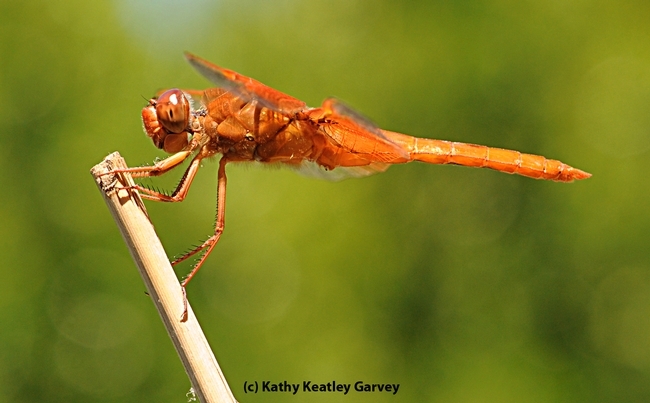
"Together with the UC Davis Museum of Wildlife and Fish Biology and Campus Recreation, we launched Bio Boot Camp in 2011, a camp for junior high-aged students who are interested in the natural sciences," Yang says on the website. "There is limited enrollment and so we ask that the students themselves be part of the enrollment process. This is a full-day camp from 8:30 am-5:30 pm on Monday, Tuesday and Wednesday based at UC Davis. Then on Thursday morning we travel to a UC Reserve for an overnight experience at the UC Berkeley Sagehen Creek Field Station, just outside of Truckee in the Sierras. We return to Davis on Friday afternoon. (Alternate years they travel to the coast to Bodega Bay.)"
On Monday, they will get to know one another, play games, explore the UC Davis campus, and "go behind the scenes" at the two host museums: the Bohart Museum of Entomology and the Museum of Wildlife and Fish Biology.
On Tuesday, they will visit local streams, catching insects, observing birds, and exploring nature with guest scientists.
On Wednesday, "we deep into standard museum practices from collecting data to preparing specimens, including invertebrates and vertebrates," Yang says.
The Bio Camp ends with an overnight trip (van transportation) to a UC Reserve to learn about nature and the biodiversity of the Central Valley.
Bio Boot Camp 2.0
The Bohart Museum of Entomology, UC Davis Museum of Wildlife and Fish Biology, and Campus Recreation launched Bio Boot Camp 2.0 in 2013 after "much enthusiasm from Bio Boot Campers who graduated out of the junior high program," according to the organizers. The camp spans 7 days and 6 nights. On the first day, vans will transport the students to UC Berkeley's Sagehen Creek Field Station outside of Truckee. There the campers will conduct a group project, engage in mini-individual projects, explore the area, and discuss college and career paths. The camp also will include "wandering hikes, exploring Lake Tahoe, silly games, and a lot of fun throughout," Yang points out. "We will be stopping at the UC Davis campus on Friday for part of the day to tour the museums and the campus before traveling to UC Davis Quail Ridge Field Station outside of Winters, CA for the last night of camp. Campers will get to compare the Sierra to the Central Valley, prepare for their presentations and have their costumed dinner party." This camp is limited to 10 students and has 3 instructors.
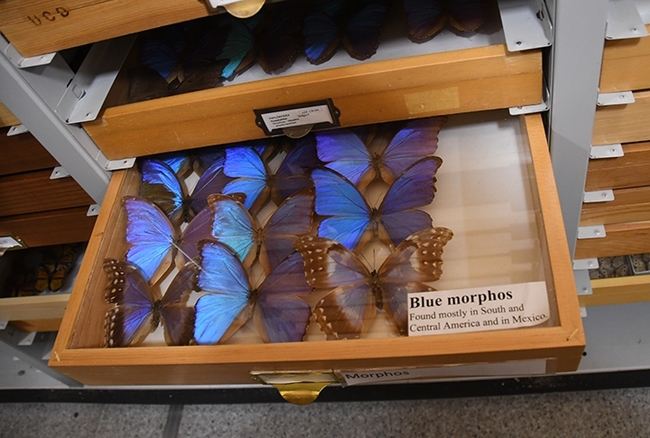
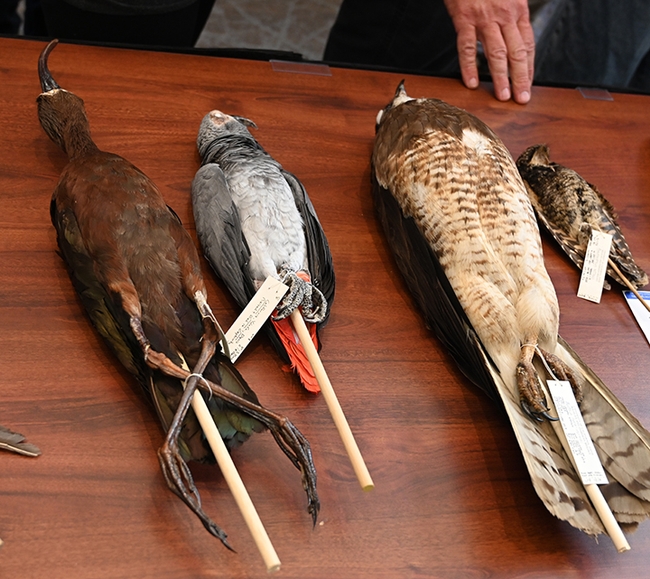
- Author: Kathy Keatley Garvey
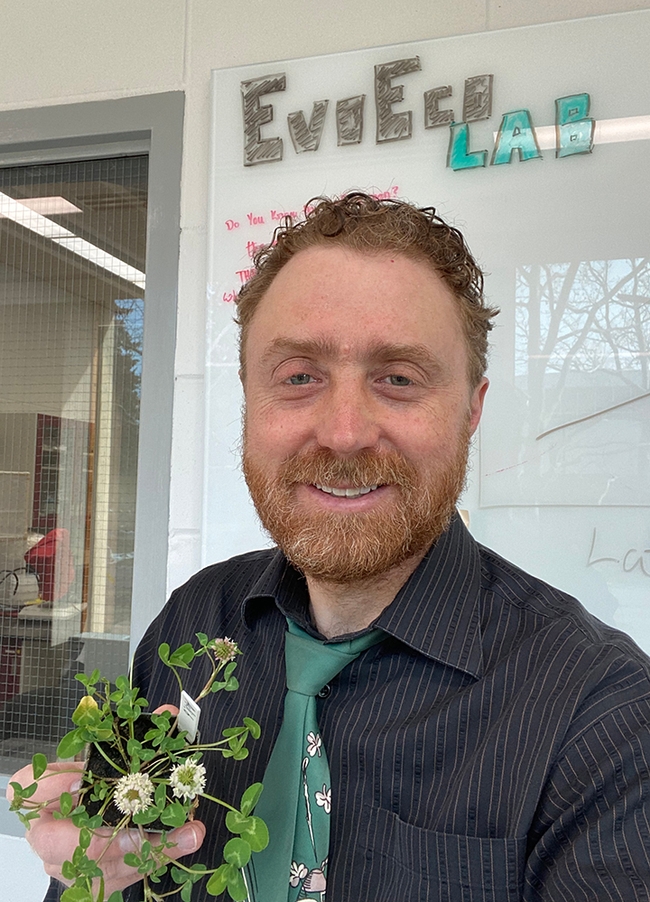
The three-leaf clover or shamrock symbolizes St. Patrick's Day. And today is Johnson's birthday anniversary. And tomorrow (March 18) is the birthday anniversary of his co-principal investigator, Rob Ness of the University of Toronto. What are the odds?
Johnson is also about 1/4th Irish, but "today, I feel 150 percent Irish."
Irish eyes are smiling!
Johnson is the principal investigator (PI) of the 287-member team that investigated white clover, Trifolium repens, in 160 cities in 26 countries. “We examined whether urban environmental change drives parallel evolution by sampling 110,019 white clover plants from 6169 populations in 160 cities globally," he said. "We found that urbanization leads to similar environmental changes across 160 cities throughout the world, which leads to repeated adaptive evolution in the cosmopolitan invasive plant white clover."
Among the co-authors are urban landscape entomologist Emily Meineke of the UC Davis Department of Entomology and Nematology and marine evolutionary ecologist Joanna Griffiths of the UC Davis Department of Environmental Toxicology. Meineke is an associate professor and Griffiths is a postdoctoral researcher. (See news story)
Was the publication planned for St. Patrick's Day? No, not at all. "It was complete happenstance."

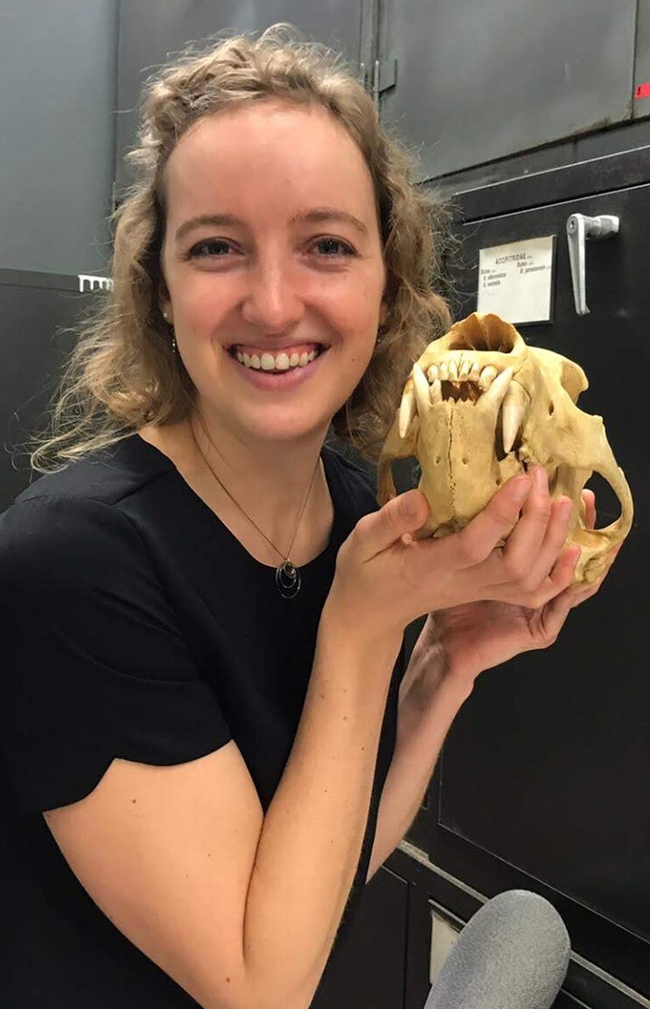
Both Meineke and Griffiths worked on the project when they were doctoral students: Meineke at North Carolina State University (NCSU), Raleigh, and Griffiths at Louisiana State University (LSU), Baton Rouge.
The GLUE Project website describes the research as “the largest scale, best replicated test of parallel evolution ever attempted. To do this, we will study the evolution of the production of hydrogen cyanide (HCN) in white clover (Trifolium repens). We previously showed that white clover evolves parallel clines in HCN (a potent chemical defense) along urban-rural gradients in eastern North America.”
In addition to Johnson, the 12-member leadership team included two University of Toronto scientists: co-PI and assistant professor Rob Ness, the second author of the paper; and doctoral student James Santangelo, first author.
There's a traditional Irish blessing that says "May the road rise to meet you." The global roads on the scientific study of white clover converged to one on March 17.
It was like a science-based shamrock summit!

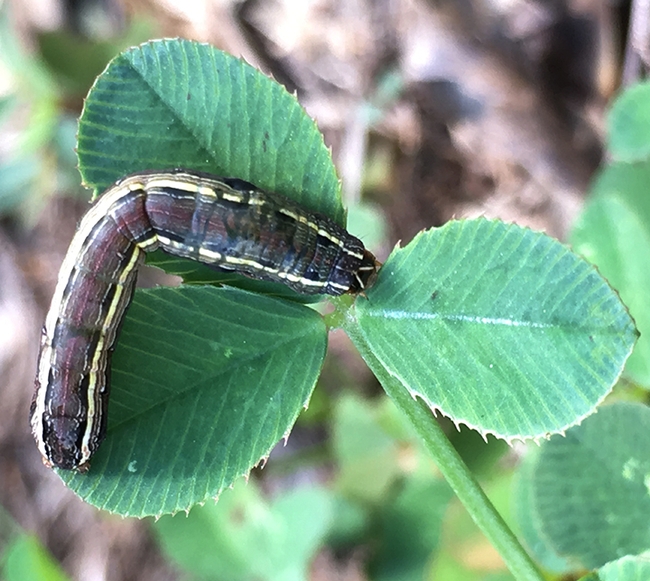
- Author: Kathy Keatley Garvey
It's not "officially" spring until we see--and photograph--the spectacular Western tiger swallowtail, Papilio rutulus.
That's what I posted April 2, 2021 on Bug Squad after seeing one land March 30 on a white lilac bush in a Vacaville park. It lingered long enough for a few photos and then fluttered away.
This butterfly's wings are a brilliant yellow with black stripes. Blue and orange spots accent the "tails" on its hindwings.
Fast forward to today: The Entomological Society of America (ESA) has before its members, a proposal to add the common name, "Western Tiger Swallowtail,” to the scientific name, Papilio rutulus.
Most of us have not called it anything else. Oh, wait, there was "That Big Yellow Gorgeous Butterfly" and "Ol' Yeller" and "Sunshine Butterfly."
The ESA-approved name, if the members agree, would be "Western tiger swallowtail." Yes!
Presently there are 10 species within the family Papilionidae that have common names established by ESA. None describe species that are primarily found west of the Mississippi.
"Western" reflects its broad distribution over the western United States, as ESA says. "It is the most abundant of the 'tiger swallowtails' in this part of the U.S., paralleling the distribution of Papilio glaucus (tiger swallowtail/'eastern tiger swallowtail') which is the most abundant species in the eastern United States."
Also up for discussion and approval are these proposals for common names:
- "Two-tailed swallowtail" for Papilio multicaudata
- "Eastern tiger swallowtail" for Papilio glaucus
- "Pale swallowtail" for Papilio eurymedon
See the ESA database of common names, which includes more than 2,000 common names of insects and is searchable by common name, scientific name, author, order, family, genus, and species.
Butterfly guru Art Shapiro, UC Davis distinguished professor of evolution and ecology who maintains a research site, Art's Butterfly World," monitoring the butterfly populations in Central California since 1972, has always called Papilio rutulus by the common name of Western tiger swallowtail. But mostly he calls it Papilio rutulus. He writes on his website:
"The Western Tiger Swallowtail is basically a species of riparian forest, where it glides majestically back and forth along the watercourse. It has expanded into older urban neighborhoods where several of its host genera are grown as shade trees, and behaves as if the street were a watercourse. In the high country and on the Sierran east slope its usual host is Aspen."
"One brood (June-July) at higher elevations; one and a partial second at Washington; 2-3 at lower elevations with a long flight season (late February or March-September or October). An avid puddler. Visits Yerba Santa, California Buckeye, Milkweed, Dogbane, Lilies, Coyotemint, etc., etc. and in gardens frequent at Lilac and Buddleia. Spring individuals are smaller and usually paler than summer. Low-elevation hosts include Sycamore (Platanus), Ash (Fraxinus), Cherry and other stone fruits (Prunus), Willow (Salix), Privet (Ligustrum), Lilac (Syringa) and (in Sacramento County) Sweet Gum (Liquidambar)."
Have you seen any Papilio rutulus this year? Or the Western tiger swallowtail? Or "That Big Yellow Gorgeous Butterfly?"



